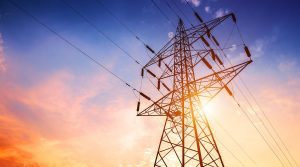
JSC “Khmelnytskoblenergo” made a clean sweep of the “Activity” ratio in the rating “Transparency and financial sustainability of state-owned enterprises in Ukraine”, created by Institute of Economic and Social Reforms (INEKO), based in Bratislava, Slovakia. Khmelnytskoblenergo beat the competition of 50 SOEs badly, securing the 1st place with the 9.2 pts. (out of 10), while the 2nd place got only 7.0 pts.
The rating was created by two think tanks, Institute for Economic and Social Reforms in Slovakia (INEKO) and the International Center for Policy Studies (ICPS), Ukraine. US Embassy in Ukraine and SlovakAid provided support for the project.
According to the methodology of the rating, the “Activity” ratio demonstrates “the efficiency of a company in its everyday business operations” and consists of Working Capital Turnover Ratio and Accounts Receivable Turnover Ratio.
Khmelnytskoblenergo also finished 8th on the “financial sustainability” and 6th on the “transparency” scale among the 50 companies analyzed.
The evaluation criteria for the Transparency scale were, according to the rating methodology, transparency and access to information, economic indicators, public procurement and property, human resources policy, ethics and conflict of interests, grants and charity policy.
According to Oleg Kozachuk, Acting CEO of Khmelnytskoblenergo, this is the recognition of the Khmelnytskoblenergo efficiency: “That’s the result of 4 years of hard work of the whole team – company’s management and almost 3,000 employees”.
Rating “Transparency and financial sustainability of state-owned enterprises in Ukraine” has been created as a part of the “Strengthening democratic stability of key state institutions in Ukraine” project by International Center for Policy Studies (ICPS) and Institute of Economics and Social Reforms in Slovakia (INEKO) with the support of US Embassy in Ukraine and SlovakAid.
JSC “Khmelnitskoblenergo” Electricity distribution service operator (DSO) in Khmelnytsk region, 70% of the company’s shares belong to the state, other 30% – to private legal entities and individuals. The company’s net profit in 2019 amounted to UAH 85.7 million, which is more than the profit of all state electricity DSOs in Ukraine combined. Dividends on the state share for 2019 amounted to about UAH 30 million.
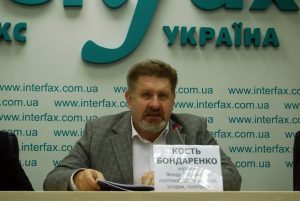
President of Ukraine Volodymyr Zelensky ranks first in the rating of the most influential Ukrainian officials, other top five officials also include Head of the President’s Office Andriy Yermak, Chief Presidential Assistant Serhiy Shefir, as well as Interior Minister of Ukraine Arsen Avakov and Prosecutor General Iryna Venediktova.
The results of the research ‘Rating of Influence of Ukrainian Officials’ were announced by Lev Bondarenko, an analyst of the Ukrainian Politics Foundation /UP Foundation at the press conference held at Interfax-Ukraine.
According to him, more than 50 experts took part in the research, the questionnaire was formed of 130 participants-officials and among the criteria assessed were influence of the position held by the officials, directly their activities and connections and their team effectiveness. The research was conducted using the questionnaire survey during September 2020.
Bondarenko said that top 30 ranks of the rating of influence of Ukrainian officials include mainly representatives of the President’s Office, the Cabinet of Ministers and other civil servants that in the public eye.
In turn, the Head of the UP Foundation, a historian, political expert Kost Bondarenko presented an analytical report related to the rating of influence of Ukrainian officials.
“A lot has changed during the year. A lot of people who were considered influential at that time resigned and new influential actors appeared, thus the power became less amorphous, more monolithic,” he said.
Bondarenko said among the external players that influence the situation in Ukraine are the U.S. Department of State, the G7, the IMF, Israel, George Soros and Russia.
“We looked close at people who influence the president and his entourage … Andriy Yermak is attempting to become the closest confidant of the president, while other team members oppose him … Today we should talk about financial and industrial groups, not about classical oligarchs. But still the representatives of the Ukrainian domestic capital influence very actively the situation in Ukraine, and are somewhat a weak counterweight to the offensive of multinational enterprises,” he said.
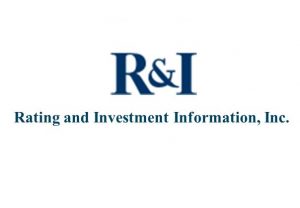
Japan Rating and Investment Information, Inc. (R&I) has upgraded Ukraine’s foreign currency issuer rating from B to B+, rating outlook is stable.
“When fiscal consolidation efforts to date and enhanced resilience to external shocks are also taken into account, economic and fiscal conditions are expected to recover in 2021 and beyond,” R&I said in a Thursday press release.
R&I said that the International Monetary Fund (IMF) financial support for Ukraine, together with loans from the World Bank and the European Union (EU), will help stabilize the government’s funding, which R&I views favorably.
R&I believes that the improved political and social stability under the leadership of President Volodymyr Zelensky will allow the government to focus on rebuilding the economy.
R&I said that among other positive moments is that foreign reserves are on the rise, standing at $28.8 billion as of end-July 2020, which covers 4.9 months of imports. Gross external debt is declining as a percentage of GDP. As of end-March 2020, the ratio was 75.8%. With external debt maturing within one year falling to 29.3% of GDP, the short-term external debt to foreign reserves ratio declined to around 1.6x from more than 2x seen until the previous year.
There is little concern over the government’s foreign currency liquidity, R&I said.
The banking sector has improved profitability. Supported by growth in deposits, the sector also maintains stability on the liquidity front.
“R&I will follow their [government and National Bank of Ukraine’s] efforts to ensure financial stability, as the impact of the coronavirus is anticipated to emerge going forward,” the agency said.
In R&I’s view, containing infections, reinforcing the healthcare system and rebuilding the economy are top priorities for the government’s fiscal policy.
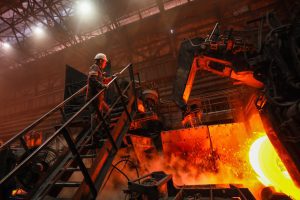
Ukraine in May 2020 reduced steel production by 10.4% compared to the same period in 2019, to 1.638 million tonnes, but climbed from the 15th to 13th place in the ranking of 64 countries, the main global manufacturers of these products, compiled by the World Steel Association (Worldsteel).
In May, a drop in steel production was recorded in most countries of the top ten, except for China and Iran. At the same time, the largest decline in steel production was recorded in India, by 39.1%.
In May, the top ten steel producing countries were as follows: China (92.267 million tonnes, an increase of 4.2%), Japan (5.916 million tonnes, a drop of 31.8%), South Korea (5.387 million tonnes, 14.1% down), the Russian Federation (6 million tonnes, 4.8% down), India (5.767 million tonnes, a decrease of 39.1%), the United States (4.790 million tonnes, a drop of 36.6%), Germany (2.850 million tonnes, 18.9% down), Iran (2.350 million tonnes, an increase of 8.9%), Turkey (2.272 million tonnes, a decrease of 25.8%) and Brazil (2.188 million tonnes, a drop by 22.6%).
They are followed by Vietnam (1.949 million tonnes, more by 11.4%), Taiwan (1.730 million tonnes, 10.6% less), Ukraine (1.638 million tonnes, 10.4% less), Mexico (1.450 million tonnes, 13.2% less) and Italy (1.250 million tonnes, less by 43.6%).
In May, 64 countries produced 148.775 million tonnes of steel, which is 8.7% less than in May 2019.
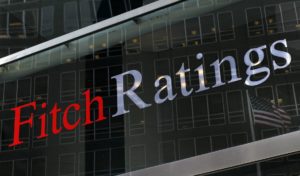
The international rating agency Fitch Ratings expects acceleration of growth of the Ukrainian economy from 3.2% in 2019 to 3.5% in 2020 and 3.8% in 2021 due to private consumption and investment. “According to official estimates, the economy grew by 3.2% in 2019 and Fitch expects growth of 3.5% in 2020 and 3.8% in 2021 supported by private consumption and investment. The revised version of the land market legislation will be positive for economic growth in the near term through increased consumption (as result of land sales) and expected increase in the demand for credit for the agricultural sector. Nevertheless, the scale of potential investment and productivity improvements will be constrained by limits on foreign investors’ participation,” the agency said on its website.
“Fitch considers that growth and investment prospects depend on the adequate and timely implementation of reforms to address constrains such as the rule of law, corruption, customs and taxation and law enforcement. As with other emerging markets, downside risks to the growth outlook have increase due to uncertainty of the impact of COVID-19 on global growth and commodity prices,” according to the report.
“Fitch considers that the NBU’s (the National Bank of Ukraine) easing cycle, lower portfolio inflows, a wider current account deficit and increased global uncertainty will lead to a weaker hryvnia in 2020 relative to 2019. External financing needs will remain high relative to peers (70% of international reserves) due to still large debt repayments and wider current account deficits. External sovereign amortizations (government plus NBU) will rise to $5 billion in 2020 and $4.8 billion in 2021 (external bond repayments averaging $2.4 billion). Fitch expects the current account deficit to widen to 3% and 4% of GDP in 2020 and 2021, respectively, from a low 0.7% in 2019, driven by continued import growth boosted by domestic demand and reduced gas transit fees,” the document states.
“As inflationary pressures remain subdued (3.2% in January), Fitch expects inflation to average 4.6% in 2020 and 5.3% in 2021,” Fitch experts said.
“Risks from international financial market volatility, delays in the IMF program approval or stronger-than-anticipated domestic demand pressures will determine the future pace and scale of the easing cycle. Fiscal risks for 2020 stem from weaker revenue growth due to a stronger than budgeted hryvnia and lower privatization revenues in addition to still to be defined social expenditure increases announced by the incoming authorities. Receipts from the Naftogaz arbitration award will help cushion government revenues and provide room to accommodate expenditure commitments under the 2020 budget, targeting a 2.1% of GDP deficit,” Fitch stated.

Ukraine in October 2019 cut steel production by 12.7% year-over-year (y-o-y), to 1.561 million tonnes, having slid from 13th to 14th place in the ranking of 64 countries that are the world’s key steelmakers, which is compiled by the World Steel Association (Worldsteel).
Steel production in October 2019 vs. October 2018 decreased in most top ten countries, except for Russia.
The top ten steel producing countries in October 2019 are as follows: China (81.521 million tonnes, 0.6% down y-o-y), India (9.089 million tonnes, 3.4% down y-o-y), Japan (8.157 million tonnes, 4.9% down y-o-y), the United States (7.407 million tonnes, 2% down y-o-y), South Korea (5.983 million tonnes, 3.5% down y-o-y), Russia (5.95 million tonnes, 2.4% up y-o-y), Germany (3.323 million tonnes, 6.8% down y-o-y), Turkey (2.687 million tonnes, 15% down y-o-y), Brazil (2.597 million tonnes, 19.4% down y-o-y), and Italy (2.225 million tonnes, 2.8% down y-o-y).
They are followed by Iran (2.2 million tonnes, 7.5% up), Taiwan (China, 1.825 million tonnes, 9.8% down), Vietnam (1.68 million tonnes, 25.1% up) and Ukraine (1.561 million tonnes, 12.7% down).
In total, the 64 countries produced 151.494 million tonnes of steel in October 2019, which was 2.8% down y-o-y.
In January-October 2019, the top ten included: China (829.215 million tonnes, 7.4% up y-o-y), India (93.306 million tonnes, 2.8% up y-o-y), Japan (83.791 million tonnes, 3.9% down y-o-y), the United States (73.539 million tonnes, 2.5% up y-o-y), South Korea (60.121 million tonnes, 0.4% down y-o-y), Russia (59.341 million tonnes, 0.1% down y-o-y), Germany (33.875 million tonnes, 4.6% down y-o-y), Turkey (27.973 million tonnes, 10.6% down y-o-y), Brazil (27.216 million tonnes, 8.6% down y-o-y), and Iran (21.518 million tonnes, 6.2% up y-o-y).
Italy ranks 11th (19.845 million tonnes, 3.8% down y-o-y), Taiwan 12th place (China, 18.763 million tonnes, a 2.5% down y-o-y), and Ukraine 13th (17.963 million tonnes, 2.3% up y-o-y).
In January-October 2019, the 64 countries produced 1.542 billion tonnes of steel, which is 3.2% more than in the same period last year.
© 2016-2024, Open4Business. All rights reserved.
All news and diagrams placed on this Web site is made for internal use. Its reproduction or distribution in any form are welcome in case of placing a direct hyperlink to a source. Reproduction or distribution of information which contains Interfax-Ukraine as a source is prohibited without the written permission from the Interfax-Ukraine news agency. Photoes placed on this site are taken from open sources only; rightholder are welcome to make demands to info@open4business.com.ua , in this case we are ready to put your copyright to a photo or replace it.